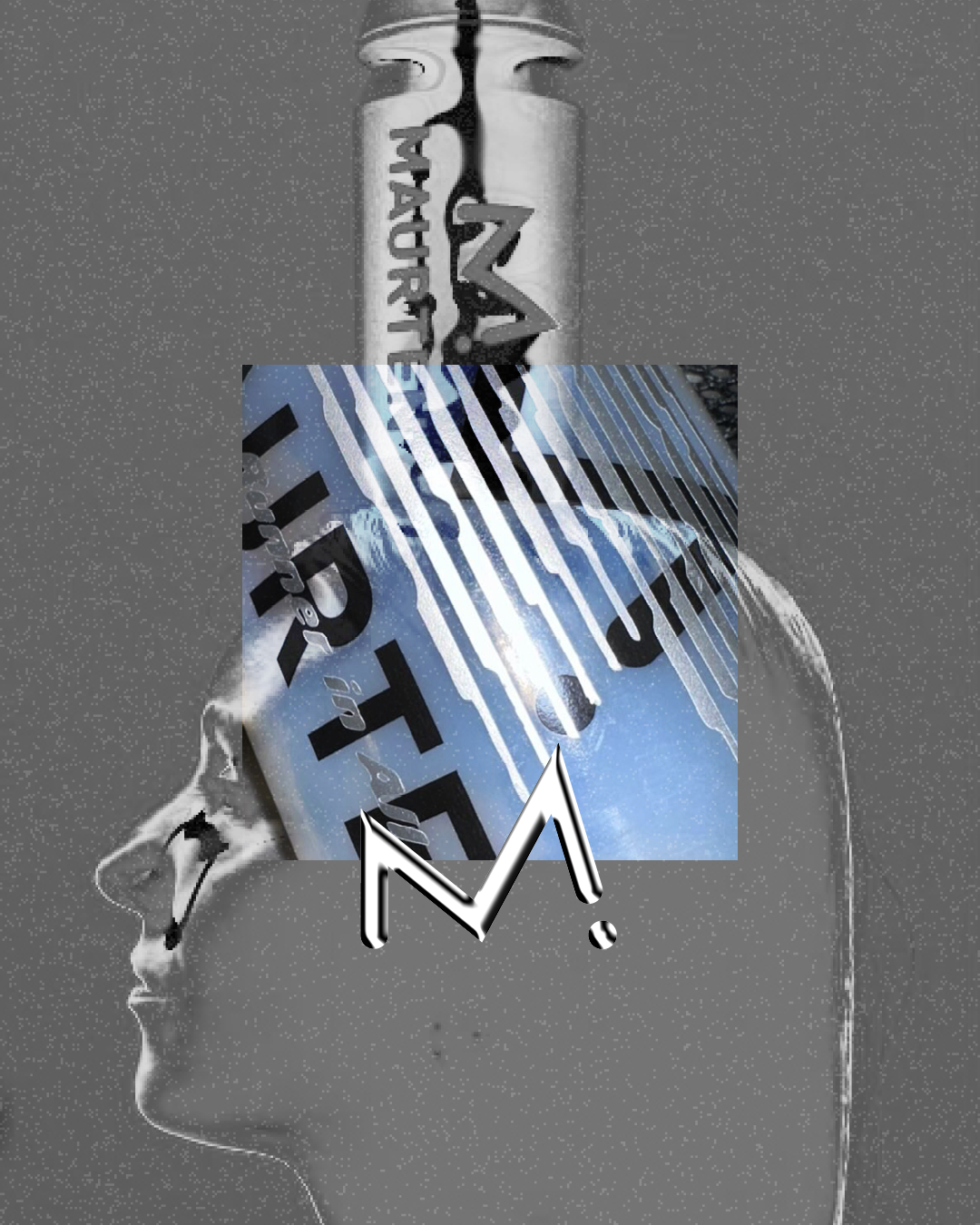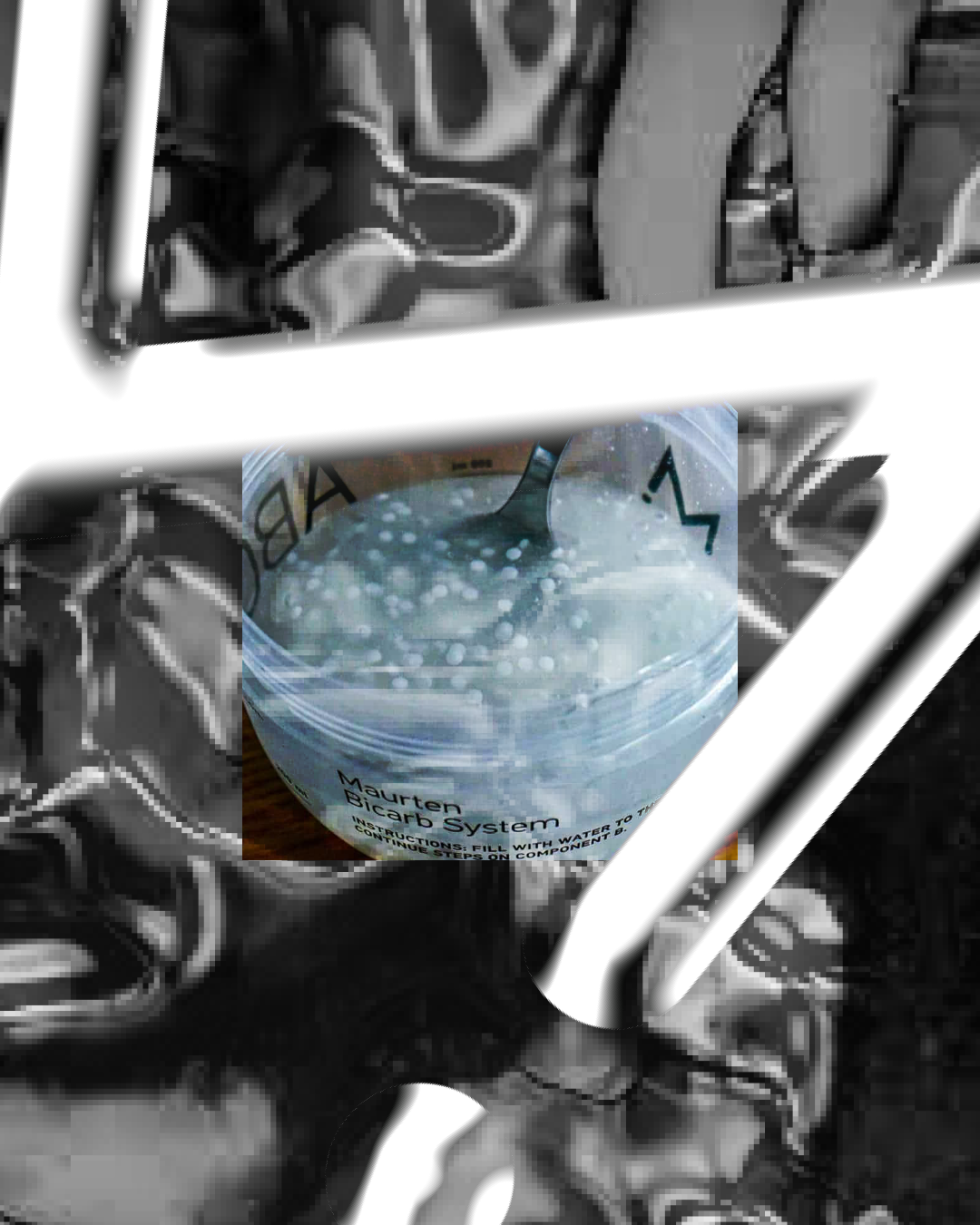Dynamic Intersection
Michele Fossi and Herman Reuterswärd, Chief Brand Officer at Maurten, on the science and strategy behind its transformative technology.

In the competitive world of endurance sports, where every second counts, Maurten is revolutionizing how athletes fuel themselves. This innovative company has harnessed the power of hydrogel technology to create a groundbreaking approach to sports nutrition.
By encapsulating high concentrations of carbohydrates within hydrogels, Maurten has developed a product—widely adopted by the professional sports community—that not only enhances performance and energy delivery but also minimizes the gastrointestinal distress commonly associated with carb consumption during intense physical activities.

MICHELE FOSSI: At the origin of every successful company, there is usually a eureka moment. When was it for Maurten?
HERMAN REUTERSWÄRD: In 2015, Mårten Fryknäs, a cancer drug researcher at Uppsala University and amateur triathlete, was facing a challenge: his attempts to “fuel” his sports performances with carbohydrates were being compromised by dental and gastrointestinal issues. Drawing from his professional experience, he came up with the idea to use hydrogel technology—traditionally used in the pharmaceutical industry to encapsulate drugs—for carbohydrates. He aimed to see if encapsulating carbohydrates could protect the teeth and stomach, while efficiently transporting nutrients to the intestine for absorption.
A researcher rather than an entrepreneur, he reached out to a friend in the business world, Olof Sköld, who is now Maurten’s CEO and co-founder. Together, they began investigating the potential of hydrogels and carbohydrates. This partnership eventually led to the founding of Maurten.
MF: This is yet another example that innovation often occurs at the intersection of vastly different disciplines, such as pharmacology and athletics. This phenomenon, known as the Medici Effect, refers to how the Medici family sparked a cultural revolution during the Renaissance in Florence by bringing together leading thinkers from various fields. Using technology established in one field in another one, in our case applying hydrogel technology to sports nutrition, not only drives innovation but also leverages the advantages of a safe, tested approach.
HR: Hydrogel is a term that encompasses a wide range of applications, including many in the food industry where it is primarily used as a thickening agent to modify textures. Our goal was to employ this technology with the high level of precision found in pharmaceutical manufacturing, a standard not commonly seen in food production. Finding a producer within the food industry who could meet these stringent precision requirements was challenging. This search for suitable suppliers was both a major hurdle and a fascinating part of our project.
A researcher rather than an entrepreneur, he reached out to a friend in the business world, Olof Sköld, who is now Maurten’s CEO and co-founder. Together, they began investigating the potential of hydrogels and carbohydrates. This partnership eventually led to the founding of Maurten.
MF: In 2017, Maurten launched its initial product, known as the Drink Mix.
HR: It’s a powder that contains a lot of carbohydrates and hydrogel components. When mixed with water, it forms a drink. Upon consumption, this drink reacts with the stomach’s acidic environment to form the hydrogel. This process is quite fascinating from a chemical point of view because you’re essentially creating the hydrogel within your body. This has allowed athletes to tolerate levels of carbohydrates previously thought impossible to consume during intense activities, enabling them to sustain high energy levels under heavy workloads.

MF: Impressive numbers.
HR: When we launched in 2017, there was skepticism about whether it was feasible to consume such products. We had to pair the innovation with extensive education about fueling in general because many people were unaware of the concept and considered it too risky, opting to stick with water instead. Fortunately, the wind was blowing in our favor. The emergence of the so-called “marginal gains era,” around the same time, made the concept of fueling more “digestible” and appealing to our consumers.
MF: “Marginal gains era?” What’s that?
HR: The era of marginal gains refers to the sports industry’s growing obsession with the accumulation of small improvements, particularly in cycling, where incremental advantages can substantially enhance overall performance. This concept gained significant traction in running in 2017, notably with Nike’s breakthrough project. That year, Nike introduced carbon-plated shoes, a major innovation previously unseen in the market. Before 2017, running shoes typically featured basic foam padding, but Nike demonstrated that integrating a carbon plate could potentially improve marathon running times by four per cent.
This innovation didn’t just alter shoe design; it sparked a broader conversation about performance enhancement in running. Released concurrently with our new drink, these two innovations marked a pivotal moment for marathon runners. Nike’s significant marketing resources helped propel this discussion into the mainstream, emphasizing the impact of technological advancements in sports performance.
The old-school approach of simply training hard has largely disappeared from running. Nowadays, everyone takes a highly scientific approach, which, thanks also to our products, has significantly evolved since 2017. Although I have a fondness for the older, more “heroic” method, I find this cultural shift in how athletes prepare and compete to be quite fascinating.

MF: This fundamental aspect is one of Maurten’s central claims. The hydrogel technology not only safeguards the stomach and enhances the digestibility of carbohydrates, but also allows for an increased carbohydrate intake. Could you provide more details on how this technology works?
HR: If you look back at the scientific literature from 2016, the recommendations typically advised that runners in a marathon should not consume drinks with more than an 8% carbohydrate content due to the high risk of GI distress. This guideline is supported by entities like the Australian Institute of Sports and the English Institute of Sports. Our first product had a 14% carbohydrate content, which was a significant increase. Back in 2016, elite runners or podium finishers rarely consumed solutions close to 8%; they were more likely to drink 2% carbohydrate solutions.
At the elite level in marathon running, carbohydrate consumption was very low, with athletes typically consuming only 0.35 to 0.7 ounces per hour. Today, they consume between 2.75 and 4.25 ounces per hour.
MF: Let’s delve more specifically into the chemistry of Maurten’s hydrogels. What sugars do they contain, in what ratio, and why was this particular ratio chosen?
HR: It depends on the product in question, but, focusing on the gel, we utilize a combination of fructose and glucose. The ratio we use is 0.8:1. This specific ratio was chosen because it has been demonstrated in research to facilitate better carbohydrate uptake. Carbohydrates are absorbed through different pathways: one channel absorbs glucose, while another, as shown in the studies, absorbs fructose.
Using only glucose might limit absorption to about 2 ounces per hour. However, by combining glucose with fructose, absorption can increase to potentially 3 and more likely 4.25 ounces per hour. This approach helps maximize energy uptake efficiently.
The reason many products avoid using pure glucose is that it can be harsh on the stomach. Consequently, most gels on the market use maltodextrin, a polymer of glucose, which forms longer chains that are gentler on the stomach and slower for the body to absorb. This is why, in our drinks, we use a mix of fructose and maltodextrin, while our gels specifically contain glucose and fructose. Our ability to deliver these carbohydrates directly to the intestine means that stomach irritation is no longer a concern when using glucose.

MF: Maurten products have been utilized by world-renowned athletes in record-setting performances. Could you give a few examples?
HR: Kelvin Kiptum, marathon world record, set in 2023. Peres Jepchirchir, women’s only marathon world record, set in 2024, to mention just two. The list is long.
MF: What additional benefits do carbohydrates provide for runners beyond preventing energy deficits and avoiding hypoglycemia? Do they also help enhance endurance?
HR: It depends on your goals and ambition, but the key takeaway is that any endurance event becomes significantly more enjoyable if you have sufficient carbohydrates. Without carbohydrates, your body attempts to oxidize fats, which is less efficient. During endurance activities, you primarily rely on two energy sources: fat and carbohydrates.
While fat is a viable energy source, it requires a lot more oxygen to be metabolized. Oxygen consumption needs to be carefully managed during physical activity because it’s limited by your VO2 max, which is the maximum rate of oxygen your body can use. Just like a fire needs air to burn, your cells need oxygen to metabolize fat and carbohydrates. However, fat oxidation requires substantially more oxygen, and during intense activities, oxygen is a precious and limited resource.

MF: Hence the body prefers to burn carbohydrates during high-intensity activities because they require less oxygen and provide quick energy.
HR: Correct. Typically, your natural carbohydrate stores last about 70 to 90 minutes of intense exercise. Once these stores are depleted, your body shifts to burning only fat, leading to a significant drop in performance—often referred to as “hitting the wall.” This is when you feel a drastic decrease in pace and energy, making it challenging to maintain intensity.
For lighter activities like a casual walk, the reliance on carbohydrates isn’t as crucial. However, for those aiming for personal bests or high-speed performance, carbohydrates are essential. The challenge then becomes how to efficiently introduce carbohydrates into the system without causing gastrointestinal distress. This is where hydrogel technology comes into play.
MF: Let’s talk about the future now. What’s cooking for Maurten?
HR: The future, I predict, will heavily focus on our latest product, the Bicarb System, which may be the most exciting innovation we’ve introduced so far. Sodium bicarbonate, commonly known as baking soda and found in our kitchens, has been recognized by the scientific community for its potential to enhance performance. It can neutralize acidity in the blood, which is produced as a byproduct when lactate is consumed during intense physical activities. Essentially, when you push yourself too hard and too fast, your blood becomes acidic, affecting the functionality of cells throughout your body. If you can buffer this acidity or delay its onset, in theory, you could see significant performance-enhancing effects.

MF: People have been aware of the benefits of sodium bicarbonate since the 1930s.
HR: However, the challenge lies in its interaction with the stomach’s acidity. When you consume baking soda, it reacts violently with the acidic environment in the stomach due to its alkaline nature. This reaction produces a significant amount of carbon dioxide gas, which can cause discomfort and bloating.
MF: Let me guess; you’re using hydrogel to transport the bicarbonate directly to the intestines, circumventing the stomach’s acidity.
HR: Exactly, we’ve applied the same concept from our carbohydrate technology to sodium bicarbonate. This breakthrough allows athletes to consume large amounts without experiencing gastrointestinal distress. This innovation is transforming sports performance, offering athletes one of the few legal performance-enhancing supplements available.
MF: Although it’s quite expensive, this product is making a significant impact in sports, with many elite athletes relying on it during competitions. How do you see it evolving in the years to come?
HR: Looking ahead, I anticipate a robust debate over the next five to ten years regarding the use of sodium bicarbonate as a supplement—specifically, its acceptance and legality. Historically, its legality was justified by the severe potential side effects, which naturally limited its use; it was essentially self-regulating. However, this brings up an ethical question: if we can reduce these side effects, should sodium bicarbonate remain legal? It’s not me that makes the rules, but this is certainly an intriguing topic for discussion.
MF: What about health concerns? Has the alkalinization of blood been researched, or is it a relatively new concept?
HR: This process, known as metabolic alkalosis, is not a new concept and has been explored for its potential to buffer lactic acid in the bloodstream during intense physical activity.
However, the consumption of highly alkaline substances can cause notable stomach side effects, complicating scientific studies. Advances in hydrogel technology may transform this field, sparking renewed interest in exploring the potential of sodium bicarbonate more thoroughly.

MF: You’ve mentioned the performance-enhancing qualities of this product. Has there been any estimation of the potential improvement in performance that could be expected?
HR: Yes, the effectiveness of performance-enhancing supplements like sodium bicarbonate really depends on several factors, including the sport and the specific conditions of the competition. If we look at the current research, sodium bicarbonate appears to be most effective in short-duration, high-intensity events, particularly those lasting from a few minutes up to about 12 minutes. In these scenarios, the use of sodium bicarbonate can lead to performance improvements of a few percentage points, which, in competitive sports, is quite significant.
However, the broad application across various sports still leaves much to be explored. The benefits can vary greatly depending on the type of sport, the athlete’s physiology, and the competition’s specific demands. Therefore, while the initial results are promising, the overall implications and optimal use cases for sodium bicarbonate in sports will only be fully understood in the years to come.

























